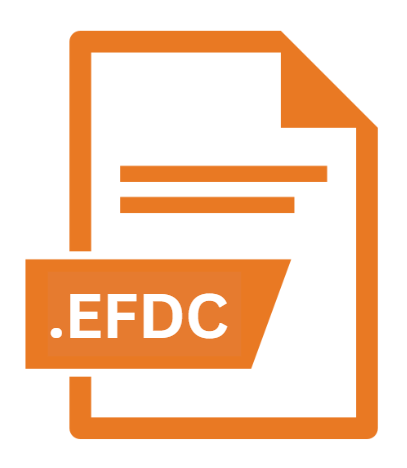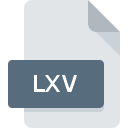.EFDC File Extension

EFDC Ransomware Encrypted File
| Developer | N/A |
| Popularity | |
| Category | Encoded Files |
| Format | .EFDC |
| Cross Platform | Update Soon |
What is an EFDC file?
Files with the “.EFDC” extension are primarily associated with EFDC ransomware, a malicious software program designed to encrypt files on a victim’s computer and demand payment for their decryption.
When EFDC ransomware infects a system, it encrypts files using a complex algorithm, making them inaccessible without the decryption key, which the attackers typically offer in exchange for a ransom payment.
More Information.
EFDC ransomware likely emerged as a new variant or iteration of existing ransomware families. Its initial purpose, like that of other ransomware strains, was to encrypt files on infected systems and demand payment from victims for decryption.
Ransomware attacks are typically financially motivated, with cybercriminals seeking to extort money from individuals, businesses, or organizations by holding their data hostage.
Origin Of This File.
The origin of EFDC ransomware can be traced back to the evolution of cybercrime and the increasing prevalence of ransomware attacks.
Ransomware, as a type of malware, has been a lucrative tool for cybercriminals since its inception. It has evolved over time, with various iterations employing different tactics and encryption methods to extort money from victims.
File Structure Technical Specification.
Files encrypted by EFDC ransomware have the “.EFDC” extension appended to their original file names.
The encryption process modifies the file structure, rendering the contents unreadable without the decryption key. EFDC ransomware likely employs strong encryption algorithms, such as AES (Advanced Encryption Standard), to secure the files effectively.
Without the decryption key, decrypting the files manually is practically impossible due to the complexity of modern encryption methods.
How to Convert the File?
Converting files encrypted with the “.EFDC” extension to their original format is not feasible without the decryption key.
As mentioned earlier, the encryption process employed by EFDC ransomware is designed to be secure and irreversible without the key. Attempting to convert the files without the key would likely result in data corruption or loss.
The only reliable way to recover encrypted files is to obtain the decryption key from the attackers. Cybersecurity experts strongly advise against paying the ransom, as it only encourages further criminal activity and does not guarantee the recovery of files.
Instead, victims should focus on mitigating the impact of the ransomware, securing their systems against future attacks, and exploring alternative methods of file recovery, such as data backups.
Advantages And Disadvantages.
From the perspective of cybercriminals, the primary advantage of EFDC ransomware is its ability to generate revenue through ransom payments.
By encrypting files on victims’ systems, attackers can demand payment in cryptocurrency, typically Bitcoin, in exchange for the decryption key.
This process can be highly lucrative, especially if the ransomware infects a large number of systems or targets high-value individuals or organizations.
EFDC ransomware poses significant disadvantages for its victims. Encrypted files become inaccessible, potentially causing data loss or disruption to personal or business operations.
Moreover, paying the ransom does not guarantee the recovery of files or the removal of the ransomware from the infected system.
Victims may find themselves at the mercy of the attackers, with no guarantee of a successful outcome even after making payment.
How to Open EFDC?
Open In Windows
- Documents: Use Microsoft Office applications like Word, Excel, or PowerPoint to open encrypted document files.
- Images: Use image viewing software like Windows Photo Viewer or third-party applications like IrfanView.
- Audio/Video: Use multimedia players such as VLC Media Player or Windows Media Player.
- Other Files: Depending on the file type, use the appropriate software or application commonly associated with that file format.
Open In Linux
- Documents: LibreOffice Writer, Calc, or Impress for office documents. Alternatively, use text editors like Gedit or Vim for text files.
- Images: View images using software like GIMP, Shotwell, or ImageMagick.
- Audio/Video: Multimedia players like VLC Media Player or Rhythmbox for audio files and VLC or Totem for video files.
- Other Files: Utilize software specific to the file type or associated applications available for Linux.
Open In MAC
- Documents: Use Apple’s Pages, Numbers, or Keynote for office documents, or Microsoft Office for Mac.
- Images: Preview is the default image viewer in macOS. Alternatively, use software like Adobe Photoshop or Pixelmator.
- Audio/Video: macOS comes with QuickTime Player for multimedia playback. Alternatively, VLC Media Player is available for macOS.
- Other Files: Use software compatible with the file format or associated macOS applications.
Open In Android
- Documents: Install Microsoft Office apps like Word, Excel, or PowerPoint for viewing office documents.
- Images: Use the default Gallery app or install third-party image viewers from the Google Play Store.
- Audio/Video: Utilize multimedia player apps like VLC for Android or MX Player for audio and video playback.
- Other Files: Depending on the file type, use apps available on the Google Play Store compatible with the specific file format.
Open In IOS
- Documents: Utilize apps like Microsoft Office for iOS or Apple’s Pages, Numbers, and Keynote.
- Images: View images using the default Photos app or install third-party image viewers from the App Store.
- Audio/Video: Use multimedia player apps available on the App Store, such as VLC for Mobile.
- Other Files: Look for apps compatible with the file format on the App Store or use apps provided by the file’s associated software.













